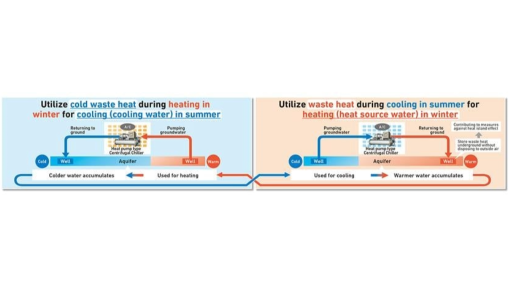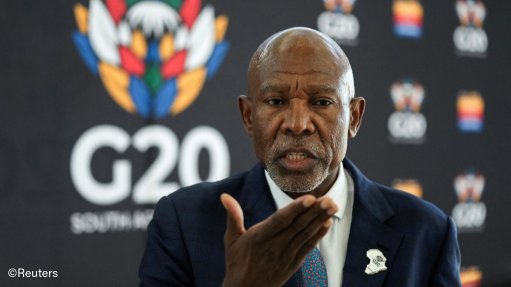How sustainable practices can keep climate change at bay.
This article has been supplied.
By Johan Potgieter, cluster industrial software lead at Schneider Electric
Climate change and sustainability are intrinsically linked; the former causes devastation and the latter provides feasible solutions for generations come. According to the UN. climate change leads to disasters such as flooding and drought, displacing millions of people, sinking them into poverty and hunger. “By 2030, an estimated 700 million people will be at risk of displacement by drought alone.”
In contrast, says the UN, sustainability provides the opportunity for a profound, systemic shift to a more sustainable economy that works for both people and the planet.
In South Africa, the country’s response to climate change and subsequent sustainability efforts are driven by a number of key factors:
Environmental concerns: South Africa is home to a diverse array of ecosystems and wildlife, and there is a growing awareness of the need to protect these natural resources.
Social and economic development: sustainable development is seen as a key driver of economic growth and poverty reduction in South Africa, balancing economic development with environmental sustainability and social equity has become paramount.
Policy and regulation: the South African government has implemented various policies and regulations aimed at promoting sustainable development, including the National Environmental Management Act and the National Climate Change Response Policy.
Corporate responsibility: many South African organisations are recognising the importance of sustainability and are implementing initiatives to reduce their environmental impact and promote social and economic development.
Attainable, organisational steps
As Lord Kelvin quite rightly said: The life and soul of science is its practical application. What climate change and sustainability require is feasible, practical application that offer measurable results.
Here, organisations have a major role to play in fighting climate change whilst establishing sustainable operations that will become a business standard and the norm. Some areas to consider include:
Finance - organisations can focus on sustainable finance such as investing in renewable energy, implementing green bonds or sustainability-linked loans, and tracking environmental, social, and governance (ESG) performance.
Maintenance - sustainable maintenance practices such as regular maintenance and repair of equipment to prolong its lifespan, optimising energy and water use, and reducing waste.
Workplace environment - creating a sustainable workplace environment such as promoting sustainable transportation options, implementing waste reduction and recycling programmes, using eco-friendly materials, and promoting sustainable practices amongst employees.
Supply chain and logistic- using environmentally friendly materials, reducing packaging waste, optimising transportation routes, and partnering with suppliers who prioritise sustainability.
Innovation which can lead to more sustainable products, services, and processes such as creating sustainable packaging, developing renewable energy sources, and reducing the environmental impact of manufacturing processes.
The low hanging fruit
The one aspect that certainly needs more discussion is reducing energy demand. In a country which is already under immense pressure (due to volatile grid), reducing energy demand is a lower hanging fruit than many realise.
It entails boosting energy efficiency - in the quest for net-zero - and circularity and sharing, re-using, repairing more materials and products in factories, households, buildings, and even entire economies.
The good news is none of this requires reinventing the wheel, technologies already exist to for example develop buildings that are sustainable and hyper-efficient and renovating existing ones to reduce energy consumption.
The Schneider Electric Sustainability Research Institute’s scenario modelling report
finds that if we rebalance our efforts on demand optimisation, energy supply decarbonisation and electrification, were one step closer to keep global warming in the vicinity of 1.5°C.
Comments
Press Office
Announcements
What's On
Subscribe to improve your user experience...
Option 1 (equivalent of R125 a month):
Receive a weekly copy of Creamer Media's Engineering News & Mining Weekly magazine
(print copy for those in South Africa and e-magazine for those outside of South Africa)
Receive daily email newsletters
Access to full search results
Access archive of magazine back copies
Access to Projects in Progress
Access to ONE Research Report of your choice in PDF format
Option 2 (equivalent of R375 a month):
All benefits from Option 1
PLUS
Access to Creamer Media's Research Channel Africa for ALL Research Reports, in PDF format, on various industrial and mining sectors
including Electricity; Water; Energy Transition; Hydrogen; Roads, Rail and Ports; Coal; Gold; Platinum; Battery Metals; etc.
Already a subscriber?
Forgotten your password?
Receive weekly copy of Creamer Media's Engineering News & Mining Weekly magazine (print copy for those in South Africa and e-magazine for those outside of South Africa)
➕
Recieve daily email newsletters
➕
Access to full search results
➕
Access archive of magazine back copies
➕
Access to Projects in Progress
➕
Access to ONE Research Report of your choice in PDF format
RESEARCH CHANNEL AFRICA
R4500 (equivalent of R375 a month)
SUBSCRIBEAll benefits from Option 1
➕
Access to Creamer Media's Research Channel Africa for ALL Research Reports on various industrial and mining sectors, in PDF format, including on:
Electricity
➕
Water
➕
Energy Transition
➕
Hydrogen
➕
Roads, Rail and Ports
➕
Coal
➕
Gold
➕
Platinum
➕
Battery Metals
➕
etc.
Receive all benefits from Option 1 or Option 2 delivered to numerous people at your company
➕
Multiple User names and Passwords for simultaneous log-ins
➕
Intranet integration access to all in your organisation





















